
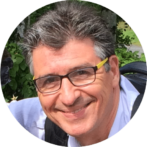
Christopher Bäuerle received his B.S degree in 1990 from the University of Karlsruhe, Germany, his M.S. degree in 1992 from the University of Massachusetts, Amherst, USA and his PhD degree in 1996 from the University Joseph Fourier, Grenoble, France. After working for two years at the University of Tsukuba and the University of Tokyo, he joined the NEEL Institute in 1998. He made significant contributions to the field of symmetry-breaking phase transition using ultracold superfluid, as well as to the understanding of phase coherence in mesoscopic systems. More recently his research interests focus on single-electron transport using surface acoustic waves as well as ultrashort charge pulses. At Institut Néel, Grenoble, Christopher’s team aims at establishing a unique and innovative platform for creating, manipulating and detecting single-electron wave packets in semiconductor quantum circuits and exploit them for quantum technologies.
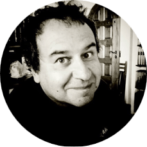
Pascal Degiovanni did his PhD at ENS Paris on Conformal and Topological Field Theory. In the first part of his career, his research was mainly focused on Mathematical Physics and more precisely on the relation between geometry, topology and quantum field theory. Towards the end of the 90s, he shifted research interests towards Quantum Mesoscopic Physics at a time where technological progresses in nano-fabrication and radio-frequency techniques have opened the possibility to explore the physics of quantum coherent electrical circuits using controlled on-demand single to few electron excitations, thereby leading to an emerging field called electron quantum optics. Motivated by these experimental breakthrough, Pascal Degiovanni has significantly contributed to the theoretical framework for electron quantum optics. His present work includes proposing quantum tomography protocols for reconstructing the quantum state of these excitations, as well as modelling of electronic decoherence effects and quantifying interaction induced entanglement in electron quantum optics experiments. He has also co-authored a book on quantum physics, information and computation based on lectures he has delivered at the ENS Lyon.
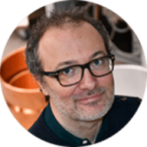
Gwendal Feve received his PhD from Université Pierre et Marie Curie in 2006 on the development of triggered single electron emitters in condensed matter. After working one year at C2N (Palaiseau), he joined LPENS in 2008 for developing electron quantum optics experiments based on the emission and control of single electron excitations in ballistic quantum conductors. In particular, he developed experimental techniques based on two-particle interferometry, where the measurement of the fluctuations of the electrical current at the output of an electronic beam-splitter is used for the characterization of the quantum phase coherence of the input electron beams. Recently, he moved to the application of these techniques for investigating anyons, the excitations of fractional quantum Hall conductors. In particular he experimentally demonstrated in 2020 the fractional statistics of anyons by studying anyon collisions at a beam-splitter.

Ulf Gennser obtained his Ph. D. from Columbia University (New York) in 1992, studying Si-based molecular beam epitaxy and resonant tunnelling in the Si/SiGe material system. He has continued his research at MIT National Magnet Laboratory (Boston), the High Field Magnet Laboratory (Grenoble), Paul Scherrer Institute (Villigen, Switzerland), before joining the Laboratoire de Photonique et de Nanostructures, CNRS near Paris, in 2000. His work at PSI included research on the metal-insulator transition in two-dimensional systems, and the realization of light-emitting Si/SiGe based quantum cascade structures. Since joining CNRS, his research activities are centered on MBE growth of high-mobility electron gases, mesoscopic physics and vertical transport devices. Ulf Gennser is responsible for the MBE growth of high mobility electronic systems.
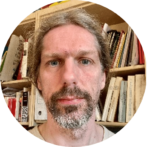
Thibaut Jonckheere graduated from the Ecole Normale Supérieure ENS Ulm, and obtained his PhD in 2001 from Paris 6 University. After a Post-doc at University College London, he joined in 2003 the Nanophysics team initiated by Prof. T. Martin at the Centre de Physique Théorique in Marseille. Along with the team, whose size has gradually increased over the years, he has been studying electronic transport in nanoscopic and mesoscopic systems, His domain of expertise includes DC and AC transport in 1d interacting electronic systems, and in particular the edge states of the Quantum Hall effect; and transport in hybrid systems involving supraconductors. He has made important contributions in the domain of Electronic Quantum Optics, where fundamental properties of quantum systems at the single electron level are studied in electronic setups inspired by quantum optics. More recently, he has studied the impact of anyonic statistcs on transport in Fractional Quantum Hall setups.
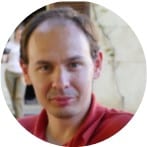
Christophe Mora graduated from Ecole Normale Supérieure Paris in 2001 and obtained his PhD degree in 2004. After a postdoc at the University Heinrich-Heine of Düsseldorf, he became Assistant Professor in Pierre Aigrain’s Lab at Ecole Normale Supérieure, then to start his lab in 2019 at Université Paris Cité. Christophe has authored more than 65 publications and was awarded Member of the Institut Universitaire de France in 2014.
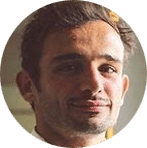
Preden Roulleau graduated from Ecole Normale Supérieure in 2005 and obtained his PhD degree from CEA in 2008. After a postdoc at Ecole Polytechnique Federale de Zurich, he joined the CEA, Saclay in 2011. Preden has authored more than 40 publications and been awarded the ERC starting grant « Cohegraph ». Preden is now the Head of the Nanoelectronic Group at CEA.
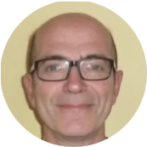
After graduating from Télécom Physique Engineering School in Strasbourg in 1990, Jean-François Roux obtained his PhD from Grenoble INP in 1995 for his work in the field of nonlinear integrated optics. He joined USMB in 1996 as Associate Professor of Electronics and Optoelectronics. In 2010, he presented his “Habilitation à Diriger des Recherches” on THz signal generation and detection using optoelectronic devices. His main interest in research is in the design and characterization of ultrafast devices for THz applications, such as on-chip spectroscopy, analog-to-digital conversion and ultrashort electrical pulse generation for nanophysics applications.
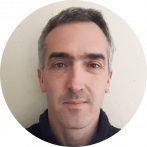
Hermann Sellier graduated from the Ecole Nomale Supérieure in Lyon (France) in 1999 and completed his PhD in 2002 on mesoscopic superconductivity and in particular on ferromagnetic Josephson pi-junctions. He then went to the Kavli Institute of Nanosciences at the University of Delft (The Netherlands) for a postdoctoral research work on quantum dots in silicon nanowires and in particular on single-electron transport through individual dopant atoms. In 2005, he got a permanent position as assistant professor at the University of Grenoble and researcher at the Néel Institute in the team Quantum NanoElectronics and Spectroscopy, where he is still working today. Hermann Sellier is an expert of quantum transport in semiconductor and graphene devices, using both electronic transport and scanning gate microscopy at very low temperature. Since 2021, he is also working on electron flying qubits, involving the ultra-fast control of quantum devices using voltages pulses and surface acoustic waves.
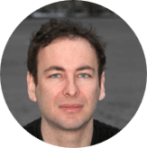
Xavier Waintal graduated from Polytechnique school, Paris area, in 1995 (X92), did a master of theoretical physics at Ecole Normale Supérieure Paris, and moved on to the group of J-L Pichard in Saclay for his PhD (1999). He then spent two years as a postdoc in P. Brouwer’s group in Cornell University, USA and was hired as a permanent researcher in CEA Saclay in 2002. In 2009, Xavier moved to INAC, CEA Grenoble, where he is now leading PHELIQS Lab Xavier is particularly interested in developing new numerical techniques to tackle difficult quantum problems and make them available to other physicists through open source codes.
![]() supports the management and communication, dissemination, exploitation activities of the EQUBITFLY project with CNRS – Institut Néel.
supports the management and communication, dissemination, exploitation activities of the EQUBITFLY project with CNRS – Institut Néel.